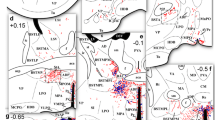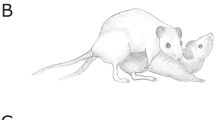Abstract
In Syrian hamsters (Mesocricetus auratus), oxytocin (OXT) activity within the medial preoptic-anterior hypothalamus (MPOA-AH) and the ventromedial hypothalamus (VMH) plays an important role in the expression of sexual receptivity. Immunocytochemical analysis with OXT-specific antibodies was used to identify the distribution of OXT-containing cell bodies and fibers in female hamster brain and to determine the possible sources of OXT important for sexual receptivity. Oxytocin-immunoreactive cell bodies and fibers were found in several regions of the preoptic area, including the medial preoptic area, the medial preoptic nucleus, and the bed nucleus of the stria terminalis. Large numbers of cell bodies and fibers were localized within the paraventricular and supraoptic nuclei, and in anterior hypothalamus. OXT-immunoreactive fibers were observed in the VMH and the ventral tegmental area. The anatomical data from the present study support the hypothesis that OXT activity in the MPOA-AH and the VMH plays an important role in the regulation of sexual receptivity in hamsters.
Similar content being viewed by others
Author information
Authors and Affiliations
Additional information
Received: 2 June 1997/Accepted: 5 August 1997
Rights and permissions
About this article
Cite this article
Whitman, D., Albers, H. Oxytocin immunoreactivity in the hypothalamus of female hamsters. Cell Tissue Res 291, 231–237 (1998). https://doi.org/10.1007/s004410050993
Issue Date:
DOI: https://doi.org/10.1007/s004410050993




